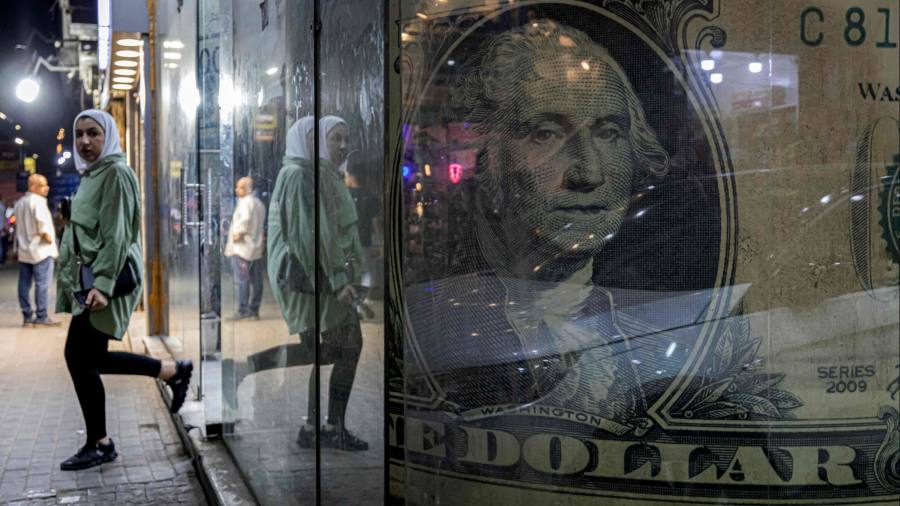“Every night I ask myself why all countries have to base their trade on the dollar,” asked Brazil’s president Luiz Inácio Lula da Silva last week during a state visit to China. It is a question on the mind of many national leaders, particularly as global trade fragments between US and Chinese spheres, and as countries evaluate exposures to western sanctions and the US economy. While paranoia about the greenback’s sticking power is mounting among some in Washington, it should not be keeping them up at night. The dollar’s demise is vastly exaggerated.
Since the 1944 Bretton Woods agreement instilled the dollar as the de facto global currency, its dominance has been sustained by America’s status as the world’s largest economy and geopolitical powerhouse. Just under 60 per cent of official foreign exchange reserves are held in the currency. It is the currency of choice for international trade, accounting for more than four-fifths of trade finance and half of trade invoices. It also dominates foreign exchange and debt markets. This drives high demand for dollars, allowing the US to borrow at a lower cost. Usurping these network effects is not easy.
It’s true that there are threats to the dollar. As Chinese trade and lending has expanded in recent years, renminbi use has risen. Its share of the trade financing market has more than doubled in a year to 4.5 per cent now — just shy of the euro’s share. Much of this is linked to increased trade with Russia as sanctions last year cut Vladimir Putin off from the west’s financial system. But, with China’s share of global goods trade now around 15 per cent, the renminbi’s reach will expand. Prior to Lula’s visit, China and Brazil agreed to settle trades in each other’s currencies, reflecting their growing mutual trade. France also recently conducted its first liquefied natural gas sale in renminbi.
US Treasury secretary Janet Yellen warned on Sunday that the west’s economic sanctions on Russia could also undermine the dollar’s hegemony. More nations may be spooked into considering alternatives to dollar-based financing to mitigate their threat. Putin has already pledged to use the renminbi more. For others, diversification makes economic sense too. Many emerging markets are growing frustrated by the dollar’s hold on their economies, from recent banking turmoil to the US Federal Reserve’s historic interest rate rises — which has raised indebtedness. Asean members are exploring how to promote the use of local currencies in their bilateral trade.
But these threats to dollar supremacy lack potency. While renminbi-backed trade may pick up, the currency still only accounts for about 3 per cent of central bank reserves. The greenback’s eminence is reinforced by its enormous liquidity, America’s openness to trade and investment, and trust in its supporting institutions. China’s financial system is by contrast less developed, its currency is not fully convertible due to capital controls, and it lacks the true rule of law. Global economic activity is still dominated by the US and its allies, which makes it difficult to avoid the dollar. The greatest threat may come from central bank digital currencies, which can provide more efficient ways to settle transactions. The US is finally waking up to this danger, but should accelerate efforts on digitising the dollar.
Given there is no viable alternative to replace it, rumours of the dollar’s decline are exaggerated. This means the biggest risk to the currency could ultimately come from unforced errors. Bolstering confidence in the US financial system after recent banking turmoil and, above all, averting a debt ceiling crisis are vital. It is important to guard against complacency; after all, Britain’s pound sterling was the dominant currency once.
Read the full article here



